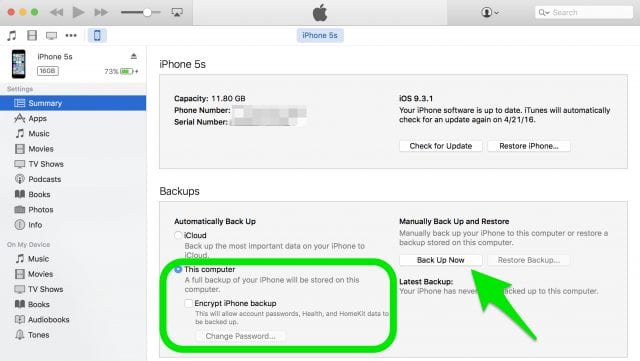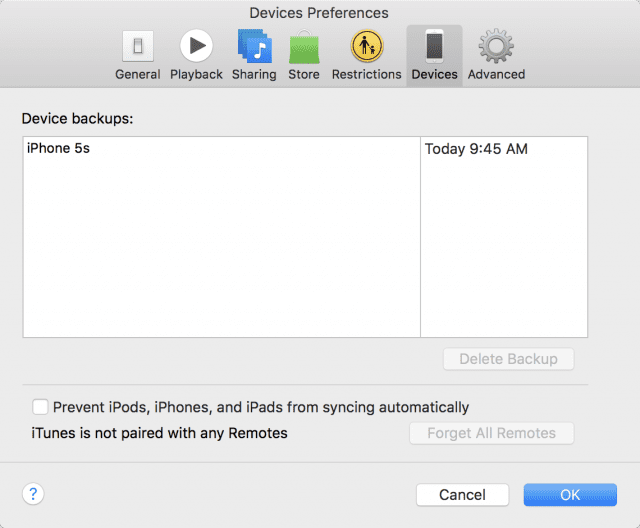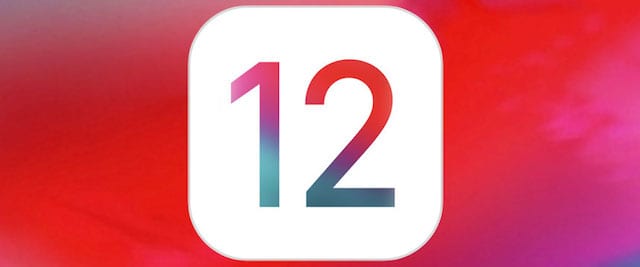 April is Backup Month, and we’ve already taught you how to set up Time Machine as an easy way to back up data on a Mac. Your iOS devices need backup love as well, so we’re back to provide a few easy methods for backing up that iPad, iPhone or iPod touch.
April is Backup Month, and we’ve already taught you how to set up Time Machine as an easy way to back up data on a Mac. Your iOS devices need backup love as well, so we’re back to provide a few easy methods for backing up that iPad, iPhone or iPod touch.
iCloud Backup
Even if your iOS device is the only “computer” you own, you can still back it up. Rather than using an external drive of some sort, backing up data to iCloud is fast and simple. All you need is an iCloud account, which can be created while setting up a new device or from Settings later. Apple provides 5GB of storage for free, but if your device backups use more than that amount or you wish to back up multiple iOS devices, you can purchase 50GB for $0.99 a month, 200GB of storage for $2.99 per month, 1TB of storage for $9.99 a month or even 2TB for $19.99 per month.
Using iOS 10.3 or later, launch the iOS Settings app, then tap the top button in Settings. It’s the one that has your name, and also a list of Apple services your device is using (see image below):

Tap this, and you’ll see another screen with your smiling face as well as a bunch of personal settings, devices that are connected to your Apple ID, and buttons for iCloud and iTunes & App Store. Tap the iCloud button, then scroll to the bottom of the section marked Apps Using iCloud where you’ll find an iCloud Backup button. Tap it to see the iCloud Backup screen (see image below).

If the button to the right of the words iCloud Backup is white, tap it once to enable iCloud Backup. The button turns green, and that’s all you’ll have to do. When the device is logged into iCloud, plugged in, locked (at the Lock Screen and not being used), and connected to Wi-Fi, it will be backed up.
What is backed up? Account information, documents created and saved on the device, Health data, Home configuration, and settings. If you move to a new iOS device, or need to reload your settings and data on a reset device, this backup will save you a tremendous amount of time.
During the iOS setup process, you’ll be asked whether you wish to set up a new device or restore from a backup. Select a saved backup from iCloud, and all of your settings and data are restored to the device. Apps are re-downloaded to their familiar locations on the home screen, but any apps that have been removed from the App Store will not be restored.
Backup to iTunes
Perhaps you don’t want the expense of iCloud and would rather have your private data stored locally. In that case, the iTunes app on Mac or PC can be used to back up iOS devices. All that’s required is a Lightning cable, or a 30-pin Dock Connector cable for older devices. Next, follow these steps:
1) Launch iTunes.
2) Connect the iOS device to the Mac or PC using the USB to Lightning or Dock Connector cable.
3) Back up content that has been downloaded from iTunes or the App Store to the iOS device by selecting File > Devices > Transfer Purchases from the menu bar (see image below). If the File menu isn’t available on a PC, hold down the Control and B keys simultaneously. Be sure to let the purchased content finish transferring to the Mac or PC.

4) Backing up health and activity data? The data needs to be encrypted. Select “This Computer” and check the “Encrypt Data” box (see image below). A password may be required; if asked for one, make sure the password is memorable as the backup can’t be accessed without the password. You can ignore this step if no health or activity data is being backed up.

5) Click Back Up Now and the backup begins.
6) When the backup is completed, make sure it was completed successfully. Open iTunes Preferences, and click on the Devices button. The name the device backed up should be visible along with the date and time of the backup (see image below). Encrypted backups will show a lock icon to the right of the device name.

Backup to an iOS Flash Drive
If you only want to back up documents, photos, videos and other data, and don’t need settings, Health data, Home configuration or other items backed up, then backing up to an iOS flash drive is a fast alternative. This method is useful for backing up photos or video taken with the iOS device camera when there’s no Wi-Fi network or computer around. Just look for flash drives with a Lightning connector on one end and a USB connector on the other.
These devices work with iOS companion apps that display what is available to back up onto the device, then allow the chosen files to be copied or moved from the iOS device to the flash drive.
The portability of iOS devices means that they go with us everywhere, and they contain a lot of personal data and cherished memories. iOS backups are simple to accomplish and critical to restoring reset devices or moving data to a new device. Make iOS backups a part of your overall backup strategy.








